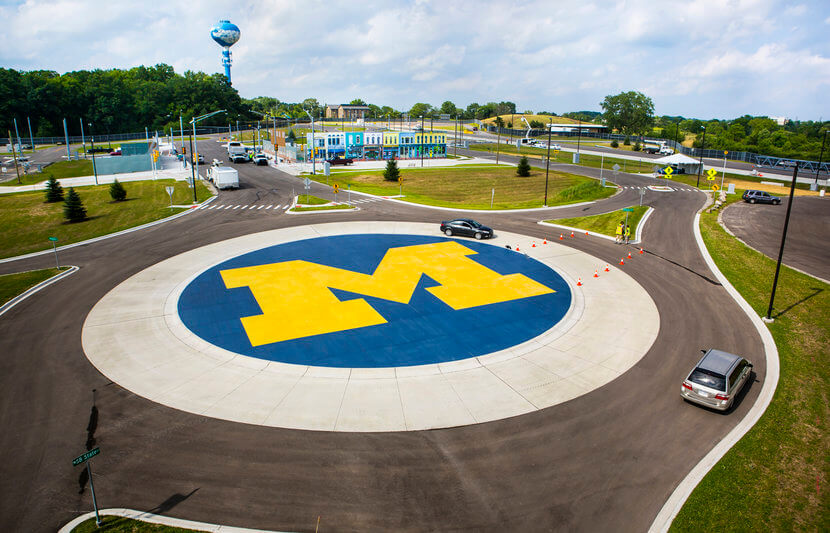Starting fall semester, the University of Michigan will introduce a fully autonomous campus shuttle system, called the ARMA.
Two buses, manufactured by the French company Navya, will transport up to 15 students, faculty, and staff on a two-mile route from the Lurie Engineering Center to the North Campus Research Complex on Plymouth Road.
To implement ARMA shuttles on the North Campus, Navya collaborated with Mcity, a 32-acre automotive test facility at UM geared toward advancing transportation safety, sustainability, and accessibility.
“At the University of Michigan, we have been studying connected and automated vehicles (CAVs) for years,” said Huei Peng, director of Mcity and a professor of mechanical engineering at UM. “This project will provide us data and hands-on experience that can only be acquired through a real-world pilot deployment.”
Implementation of autonomous shuttles perfectly depicts the innovative culture at UM. Researchers have led the charge as a world leader in automotive engineering development for over a century.
“UM researchers play key roles in the development of vehicle dynamics, advanced manufacturing, pneumatic tires, internal combustion engines, electrified powertrains, and light-weight structures,” said Peng. “This project is yet another example of our long tradition in developing and deploying cutting-edge technologies to shape the future of ground vehicles and to change the future of mobility.”
As of now, autonomous vehicles are primarily confined to geofenced areas, such as a college campus. This is due to limited mapping capabilities and people’s skepticism towards self-driving vehicles. The ARMA is guided by a precise mapping system, but still only covers two miles.
In order for autonomous vehicles to gain consumer traction, safety must be held at top priority. The ARMA’s will travel at speeds below 20 m.p.h. It has been weather-tested for rain and snow, and will come equipped with safety features, including an emergency stop button for the riders.
In an effort to gauge and improve public opinion, researchers will install exterior cameras to “see’” reactions from pedestrians, bikers, and drivers. In addition, Mcity will survey riders experience to improve the safety and efficiency of autonomous vehicles. In Peng’s eyes, the next steps are simple. “We deploy, learn, innovate, improve, and keep moving toward perfection.”
The shuttle will operate during business hours and on UM roads only. However, Mcity looks to increase hours of operation and distance when consumer acceptance grows.
The ARMA shuttles are the most recent project for Mcity, but not the first. Researchers at the testing facility have years of experience in automotive development and a strong financial backing. Mcity is funded by UM, federal grants, automakers, and other companies.
“Driverless vehicles will play important roles in the future of transportation, but they are not the single convergence point,” said Peng. “Future transportation must be safer, cleaner, more reliable, more accessible, and more convenient. They will be more electrified, connected, automated and shared. Technologies will be judicially selected and used to design mobility solutions that serve the society well.”
Navya plans to open an assembly plant in Ann Arbor, where ARMA shuttles will be constructed. The company wishes to assemble 20 vehicles by the end of this year, and plans to sell them to commercial buyers for use in finite spaces such as theme parks or campuses.



